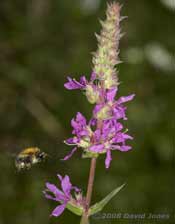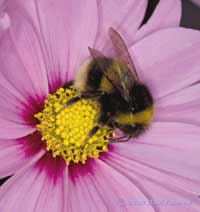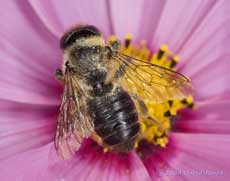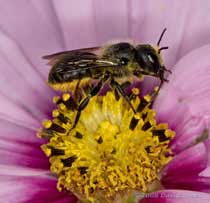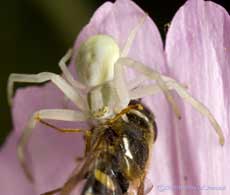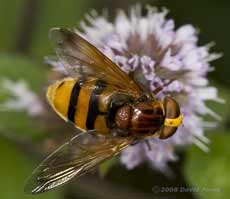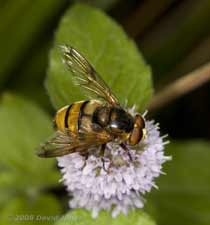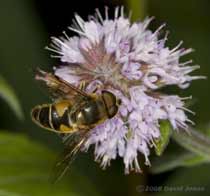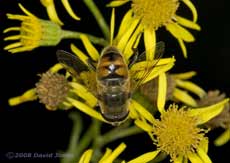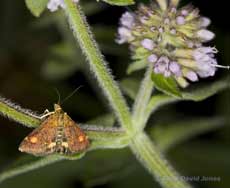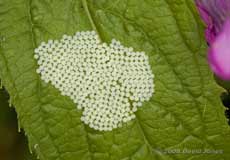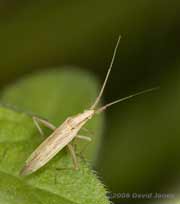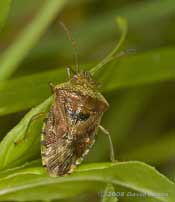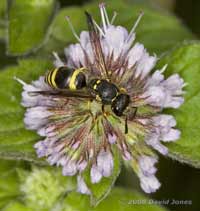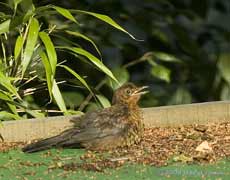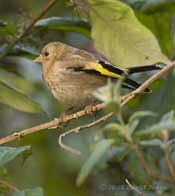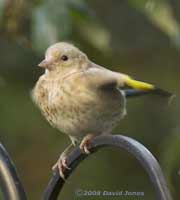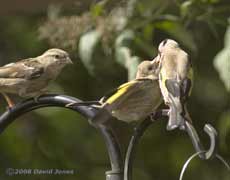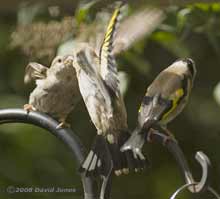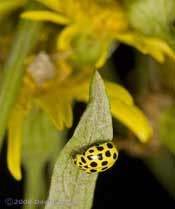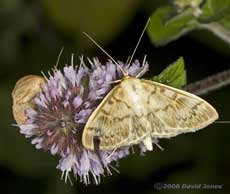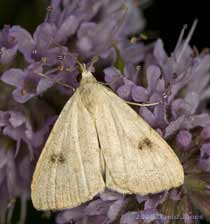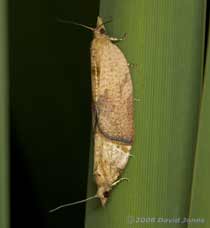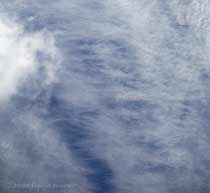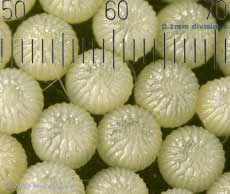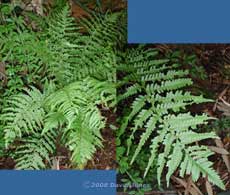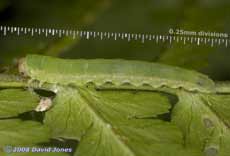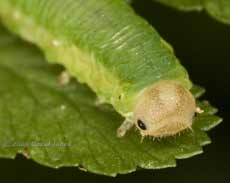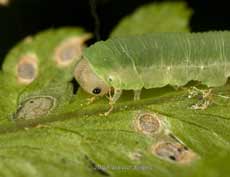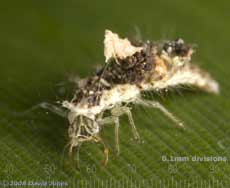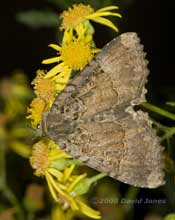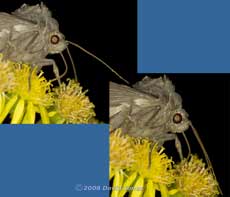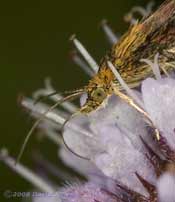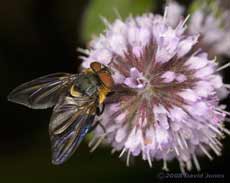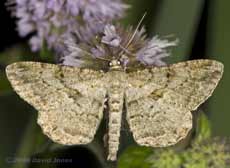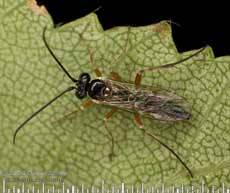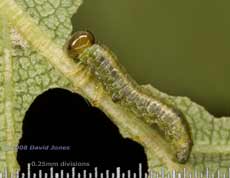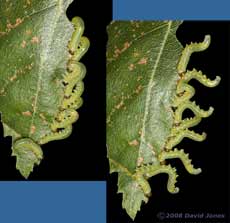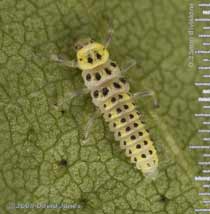Go to the last entry on this page .....Go to previous entry11 August - Home again from Cornwall, a few days earlier than planned and after a much of the day on the road. There were lots of caravans and camper vans heading west - I hope the weather is going to improve for them! We had a mixed time, with some very good days but far too many wet days as the weather turned pear-shaped. Just before we went to Cornwall I bought one of those Olympus waterproof cameras and ended up using that (and having fun with it) more than the Canons! I've uploaded my holiday diaries and you can go to the start of them by clicking on the link at the bottom of this page. Having just looked through it I find, rather annoyingly, that many of the pictures appear darker than intended. They looked fine on my laptop but darker on the monitors at home. If I have time I will be looking through the pictures to make adjustments.
13 August - It seems that the poor weather has followed us home. There has only been a little rain but it was cloudy and quite windy and cool for most of the day - what has happened to our summer, again? I'm still trying to wake myself up after the journey home so there are no new photographs for the diary. As usual I need to get out into the garden to do some trimming and tidying up after our absence, but that will have to wait a few more days. The House Martin nests remain empty and it is very unlikely that any Martins will turn up now - very disappointing, and frustrating after we saw many House Martins during the holiday. The webcam stopped operating at just before noon last Friday as a result of a power cut while we were still in Cornwall, and I have now decided to turn off the nest cameras and all their associated electronics for the rest of the year.
16 August - Summer has sort of returned these last few days. The 14th was sunny, apart from a torrential downpour during the afternoon, and the last two days have been dry - I actually did a little bit of sorting out in the garden today. This damned CFS of mine get very frustrating at times and this week it has been a real pain, which is why there have been no diary entries. However, I have taken a few photographs so here goes before the week ends - In addition to the usual massive growth of greenery, here are several plants that have come into flower during our absence.
This single plant had numerous flowerheads developing. It was planted at the same time as the Common Agrimony and the Meadowsweet that I photographed just before we went on holiday. Both of these have finished flowering and I'm keeping my fingers crossed that they will produce fertile seed ready for next year. We were surprised how much Meadowsweet we saw during our trips to and from Cornwall, perhaps because we can now put a name to it!
While we are seeing Carder Bees visiting, the most frequent Bumblebees at the moment is the Common Garden Bumblebee. They are particularly partial to the Cosmos flowers. In the main, these plants are doing well although I'm afraid that a couple have been badly damaged by slugs (where are the hedgehogs?!). The Garden Bumblebees also seek out the remaining Red Campion flowers, although those plants are pretty scruffy by now.
I've only see a couple of Honey bees this week, and solitary bee activity is far less than before our holiday. This is one of just a small number of solitary bees that I've seen visiting the Cosmos blooms.
and here is another which is cleaning its proboscis before leaving.
You can always count on at least one Cosmos flower hiding a hidden danger for the visitors in the form of a white spider (Misumena varia). Crab-like in appearance it waits to pounce on flies or bees that come to feed at the flower. This one has caught a hoverfly which may be Metasurphus luniger (Lunate Hoverfly). I had hoped to collect it after the spider discarded it, but it disappeared - did the spider remove it from the flower deliberately to 'hide the evidence'. It is still in an ambush position this evening.
The plants that seem to be the main attraction for the greatest variety of hoverflies are the Water Mints which are starting to flower all around the big pond. The most impressive seen so far has been this very large individual which I think may be Volucella zonaria (Belted Hoverfly).
Is this a male Volucella inanis (Inane Hoverfly). It may be slightly smaller than the previous one.
And a somewhat smaller, Eristalis pertinax (its yellow feet not visible in this picture). There are also several types of much smaller hoverflies visiting the mint flowers but I haven't been able to get close enough to photograph them this week.
A plant that has been in flower since before our holidays is the Ragwort. It seemed to start flowering a bit too late to really benefit the solitary bees this year. It is now past its prime and this week end I will be dead-heading the plants to prevent the spread of their seeds beyond the garden. Here, another hoverfly rests on the Ragwort between feeds on the mint flowers. This one is, I believe, a Drone-fly (Eristalis tenax). Two disappointments regarding the Ragwort - There's no sign of either Cinnabar moths or their caterpillars, and the nattionally scarce Ragworty Flea Beetle (Longitarsus dorsalis), both of which have been here in past years.
Going back to the Water Mint, one insect that we can rely on to make an appearance around the mint flowers is this Pyrausta aurata, a very pretty, if very small moth that you cannot miss as it flutters about the plants during the daytime. There have been a few other moths flying about in the daytime, usually very light in colour, but I haven't managed any photographs of them. I haven't been up to night-time moth hunting this week.
However, I have found this evidence of moth activity on a leaf of a Great Willowherb which is in flower at the moment. I've counted some 346 eggs, although one if definitely damaged and another looks darker than the rest so perhaps is infertile. In the next day or so I must take a close-up complete with a scale to give a better idea of their size.
My next two insect pictures come from the grass at the side of the big pond.
The first is this very slender, small bug which is probably Stenodema laevigatum, an abundant inhabitant of long grass.
The second is also a bug, this time a Parent Bug (Elasmucha grisea), so named because of of the female's habit of sitting on her eggs to protect them, something I would love to get the chance to photograph here.
And for the last picture in this set I go back to the mint where I saw my only solitary wasp of the week. I'll come back to the ID of this one at another time.
After we've been away for a holiday I always wonder how long it will take before the birds realise that the feeders are filled once again. This week, while there was a Blue Tit here within an hour, it took the Sparrows until the next day to start reappearing in the Hawthorn. By Wednesday it seemed that everything was back to normal, with a Squirrel visiting and even the Nuthatch making an appearance. In fact I looked out to see what I thought was a Nuthatch leaving the table and heading down the garden. Just moments later another one appeared out of the Buddleia - were there really two of them??
Yesterday started of bright and sunny and when I glanced out of our bedroom window first thing in the morning, I spotted this juvenile Blackbird sunbathing at the far end of the caravan shelter. When I first looked out it had its right wing spread out to warm.
While for many birds the nesting season is now over, it looks as though it may only just for at least one Goldfinch pair. Yesterday afternoon this fledgling made an appearance and spent time swaying and flapping its wings furiously on a Buddleia branch while its parent stocked up at the sunflower feeder. The appearance of a Collared Dove frightened it before I could record it being fed.
It (or another fledgling) was here again today. This time it perched on top of the feeder post.
This time there was more frustration when its parent kept its back to be as it fed the youngster. My interest in the proceedings seemed to be shared by this Sparrow that edged closer as the feeding went on.
When the food ran out and mum turned away, the fledgling turned its attention to the Sparrow and appeared to approach it as if hoping for more food, although the Sparrow's pose suggests that it was also hoping to be fed!? The encounter didn't last more than a moment or so before they all flew off into the Hawthorn.
Having thought that this entry was finished, I decided to take a break before starting to add the large images. Going out the garden with a torch is always likely to be followed by a dash for the camera, and tonight was no exception. What I should have said earlier was that since coming home I hadn't seen a single Ladybird (not even a Harlequin!), but tonight I've broken that 'duck'.
This 22-spot Ladybird (Psyllobora 22-punctata) was hunting amongst the flower heads on a Ragwort. Before this, the only ladybirds I've seen over the last month were a couple of Orange Ladybirds in the field our caravan is in on the Lizard. I have seen no sign of these ladybirds ain our garden so far this year.
And the Water Mint is attracting moths. The first to catch my eye was this one, a Mother of Pearl (Pleuroptya ruralis). Confusingly, this is regarded as a micro-moth, even though it is larger than
this smaller species which shared the flower head with. This is a Straw Dot (Rivula sericealis).
Not feeding, but mating on an Iris leaf was this pair of Epiphyas postvittana (Light Brown Apple Moth). Interestingly, this was originally an Australian species that may have been introduced into the UK in Cornwall in the 1930's. Thanks again to Tim Norris for coming to my aid with the ID's for the moths in this entry.
And before I forget, there was a hedgehog wandering amongst the undergrowth while I was outside.
17 August - A day that started off bright and promising, but it wasn't long before we started to see the changes.
It turned dull and cooler as grey clouds moved in at a somewhat lower level during the afternoon. It meant that while the Bumblebees continued to visit, there was far less hoverfly activity than yesterday. This evening the medium altitude greyness is complete! Nevertheless, I have a few more observations to record.
First of all I took that promised closer look at the insect eggs on the Willowherb. Each egg has a diameter of around 0.65mm which doesn't sound like much. However, by my calculations this means that the 346 eggs have a total volume of nearly 50mm≥, all laid in a single session - not bad for a small moth.
Spread along the deeply shaded border on the south side of the garden we have eight ferns that have thrived.
The fern nearest the house is the most recent addition (some two years ago) grows out of a hollow log. While it looked very healthy before we left for our holiday, this morning I noticed that several of its fronds had been nibbled at (no sign of this on the rest of the ferns). I've not previously seen damage like this on our ferns
with what appear to be tiny horn-like antennae on its light brown head.
In addition to the chunks taken out of the edges of them, some of the fronds are also covered with brown spots which suggest that either the larvae or something else has been nibbling at their surfaces.
Perhaps the rather poor weather can be blamed, by I am finding only low numbers of aphids in the 'usual' places this summer. I would normally expect to find thriving groups of aphids on the undersides of bamboo leaves. Of course, while they are regarded as pests but they are essential food for most of our ladybirds. As I mentioned yesterday, adult ladybirds are in short supply, and so are their larvae. I'm not finding any at the moment.
The larva uses faeces and other debris as a camouflage.
Tonight, with rain starting to fall, I had a quick look for moths around the pond. I saw only the same moths as last night on the Mint flowers, but I also found this Old Lady moth (Mormo maura), a regular summer sighting in the garden. With it measuring over 4cm across with its wings folded, it makes the Ragwort flowers and other moths that visit the garden look very small.
As it uses its long proboscis to probe the florets on one flower head, it is already checking out the next flower head with its antennae.
18 August - A dull, grey day with some drizzle, although I was able to spend some time outside dead-heading the Buddleia and the Ragworts. Just a couple of observations to be recorded - a couple of Large White and one Speckled Wood Butterfly seen in the garden. Here indoors, I've also done a bit of catching up with the diaries of both the most recent, and the May/June holidays. The earlier holiday (which has been sitting in my laptop!!) can now be found by clicking on the Garden Diary index link below. I still need to go through many of the images from both holidays, reprocess the darkest ones, and sort out how to avoid this problem in future.
19 August - A largely cloudy day with just an occasional touch of dampness in the air during the afternoon and evening, and very breezy. Having seen just one Goldfinch fledgling over the last couple of days, there have been at least five here today. I did a bit more pruning, and as usual I checked all the cuttings before bagging them. I usually expect to find something interesting but today I think I found just five or so aphids, on bits from a rose bush, Willow, and Elder. I suppose if I were a 'real' gardener I'd be pleased!
During brighter spells the mint plants were getting small numbers of hoverflies and the small moth Pyrausta aurata. I didn't go after the hoverflies again, but while the moths are usually rather flighty whenever I get close, today I managed to sneak close enough to get this shot of one feeding.
I don't recall seeing one like this here previously, and as is often the case, my efforts to identify it using my guides have failed so far.
Thanks to Steve McWilliam I now know the fly to be Phasia hemiptera (previously known as Alophora hemiptera), a tachinid fly the female of which lays eggs directly into various bugs, the larva being an internal parasite of the host.
If it's not raining tonight I'll be checking for moths again after dark. On that topic I must pass on another thanks to Tim Norris for helping out with ID's for the moths I photographed a few days ago, as well as a couple in my holiday diary.
Update at 10pm - There was just this one 'new' moth at the Water Mint in addition to the species photographed over the last few nights. A search through my moth guide suggests that it is likely to be a Willow Beauty (Peribatodes rhomboidaria).
Also, some news almost worth breaking open a Bailey's for, but first...
I did my usual check of the Birch tree and while things were very quiet on its foliage, I found just this one Ichneumon fly roosting under a leaf,
this solitary sawfly larva which had obviously been nibbling at the leaf for a couple of nights,
and this synchronised reaction team of sawfly larvae which swing their tails into the air in a seemingly coordinated way when disturbed. They usually do better job of it than this - no medals for them, I'm afraid! They are likely to be the larvae of the Hazel Sawfly (Croesus septentrionalis) which despite their name are also partial to Alder and Birch foliage.
Finally, the reason for my joy tonight - the larva of an Orange Ladybird. In fact, after finding this one I spent quite a while checking all the lower branches and found one more, at the other side of the tree. This is brilliant news. It means that despite the apparent lack of ladybirds in the garden we haven't lost the Orange Ladybirds. I just hope that I find more over the weeks to come.
Click on images to see larger versions |
|
